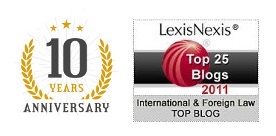Sion Clwyd Roberts, one of a team of media and IP lawyers at Capital Law, talks social media and its role within modern news media coverage.
Citizen journalism, or user generated content, as it is known in media circles, has been making an increasing impact on the media landscape as smart phones have turned everyone into amateur on-the-spot camera men, capable of capturing images and video footage of major news stories as they unfold.
By now we’re all familiar with seeing images on breaking news stories that have clearly been borrowed from the Twittersphere, a result of news agencies scrambling to cover events in more or less real time before their on the ground news teams can be dispatched.
The fatal stabbing of drummer Lee Rigby in Woolwich once again put Twitter in the spotlight, with the social network beating traditional media outlets to the story with instant eyewitness accounts, pictures and video.
Within minutes, TV broadcasts were featuring images taken from Twitter, websites also carried pictures with the BBC publishing the first picture to appear on Twitter attributed to @baotri_tran showing drummer Rigby lying dead on the floor. Of course such action is hardly surprising when the photos that appear on Twitter are the only photos available of a dramatic event, but it certainly raises an issue about copyright.
For a long time, some have held the view that if a user publishes a photograph to Twitter it was therefore considered fair game to be used at will with no financial recompense to the ‘owner’. But there is now a general acknowledgement by news and picture editors that, under law, the photographer owns the copyright, no matter how they choose to share it.
Twitter’s terms of service back this up, confirming that whilst users give Twitter the license to use photos or videos, that’s as far as it goes; if anyone else wishes to use the material, authorisation must first be sought and, if required, financial reward provided. A story which is corroborated by the landmark ruling in New York earlier this year in a copyright infringement case against the Washington Post and Agence France Press, which it was ruled had infringed copyrights of photographer Daniel Morel in using pictures he took of the aftermath of the Haiti earthquake in January 2010.
AFP had argued that once the pictures were distributed via Twitter they were freely available for it to publish. However the judge, referencing Twitter’s terms of service, claimed otherwise, ruling in favour of the photographer.
Such cases have significantly altered the social media copyright landscape, effectively shifting the pendulum of power very much into the hands of the photographer. And it’s not something the news agencies are ignoring, with many crediting Twitter photographs and frequently entering into agreements with posters to license their material and subsequently sharing the spoils.
A potential fly in the ointment might be the issue of the public interest and the use of photographs, in particular in cases such as that of the Woolwich murder where the use of amateur images contributed to the swift arrest of the perpetrators. The copyright act states that the use of material for the purpose of reporting current events is permitted provided that the source of the material is acknowledged and that the amount of the material quoted is no more than is necessary for the purpose. However the act specifically excludes the use of photographs.
Nevertheless, publication of photographs under the umbrella of public interest does occur and it would be a brave court that would uphold the rights of the amateur photographer against those of the public interest in such a case.
Sion Clwyd Roberts heads up the Media & Intellectual Property team at Capital Law. Find out more information here http://www.capitallaw.co.uk/site/services/intellectualpropertyservices/


 12+ years sharing great legal advice
12+ years sharing great legal advice
